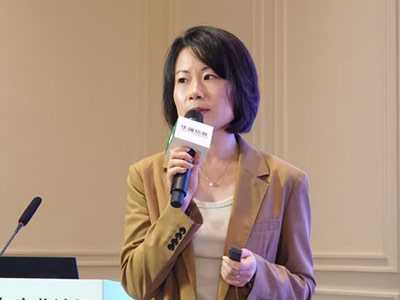Lyocell fiber application trend research and outlook
——Zhang Zixin, China Chemical Fibers Association

Mr. Zhang Zixin, Secretary General of the Lyocell Branch of the China Chemical Fibers Association, delivered a report. His presentation offered an in-depth analysis of the current applications and future trends of Lyocell fiber across various fields, including fiber, yarn, fabric, dyeing and finishing, apparel, and home textiles-providing valuable insights and directions for industry development.
Lyocell fiber, made from renewable wood pulp and processed through an environmentally friendly and biodegradable method, showcases sustainability throughout its lifecycle, drawing significant attention from the industry. The forum highlighted the fiber's eco-friendly nature and its combination of cotton-like comfort, polyester-like strength, wool-like aesthetics, and silk-like softness-factors that are driving continuous growth in market demand. From a global capacity and domestic apparent consumption perspective, Lyocell fiber has a promising market outlook. In 2024, the proportion of Lyocell used in nonwoven applications is on the rise, with its cost-effectiveness rapidly translating into increased market demand.
In the yarn sector, the application of Lyocell varies among companies. Blended yarns combining different proportions of Lyocell with other fibers are diverse, and adoption rates among non-cotton fiber enterprises also differ. However, the industry currently faces issues related to insufficient standardization, lack of clearly defined technical specifications, and quality control challenges. These need urgent resolution. Fortunately, industry standards for Lyocell yarns are steadily being improved, providing a reference for market regulation.
In terms of fabric, analysis of 557 fabric samples containing Lyocell components revealed a wide variety of Lyocell-cotton blends. In two-component blends, Lyocell/cotton combinations are mainstream, while Lyocell/cotton/spandex is a common three-component blend. Fabrics with over 80% Lyocell content or other dominant materials also show typical pairing patterns, offering valuable insights for fabric development.
In the dyeing and finishing segment, Lyocell's fibrillation tendency, high wet swelling, resistance to oxidation, and variable affinity for reactive dyes influence fabric appearance and performance. However, the industry has gained clearer understanding of how to optimize processing parameters to address these characteristics. In 2024, the number of enterprises capable of dyeing and finishing Lyocell fabrics increased by 34% compared to 2023, indicating strong growth potential in this area.
The apparel and home textile sectors are key application areas for Lyocell fiber. Brands such as Aimer, Youngor, LALABOBO, and Nan Knits shared their experiences using Lyocell in garments, praising its softness, breathability, and ease of care-attributes that are favored by consumers and widely applied in various clothing categories. In the home textile field, companies like Mercury Home Textiles and Golden Sun are actively developing Lyocell products. The fiber holds great potential for use in quilts and pillow fillings, with advantages in touch, drape, coolness, and smoothness-injecting new vitality into product upgrades.







